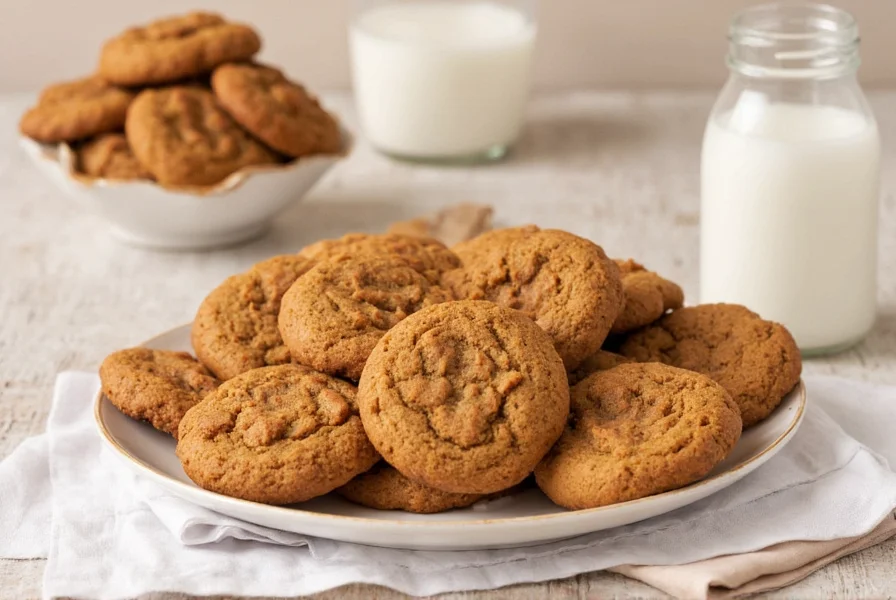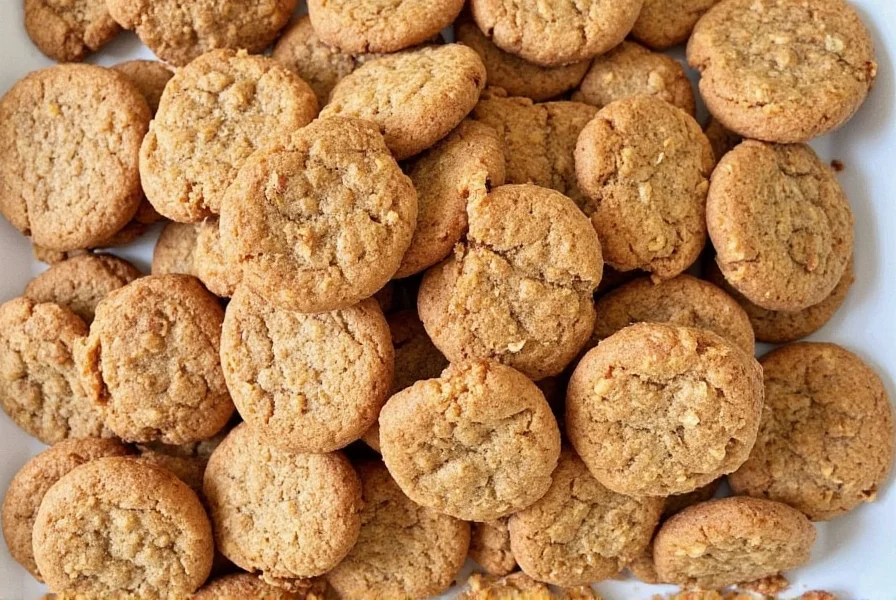Nothing says comfort like the warm aroma of freshly baked ginger cookies filling your kitchen. These spiced treats have delighted palates for generations, evolving from medieval European "gingerbread men" to the soft, chewy delights we know today. Understanding the science behind the perfect ginger cookie transforms good bakers into exceptional ones.
The Essential Ginger Cookie Ingredients Breakdown
Professional bakers know that ingredient quality and ratios make or break your homemade ginger cookies recipe. Let's examine each component's role:
| Ingredient | Function | Pro Tip |
|---|---|---|
| Dark molasses | Provides deep flavor and moisture retention | Use robust, unsulfured molasses for authentic taste |
| Freshly grated ginger | Adds bright, zesty notes that dried ginger can't match | Microplane works best for fine, even distribution |
| Cream of tartar | Creates the signature tangy flavor and chewy texture | Don't substitute baking powder for authentic results |
| Cinnamon | Warm base note that complements ginger | Ceylon cinnamon offers more complex flavor than cassia |
Step-by-Step Baking Process for Perfect Results
Follow these professional techniques for soft ginger cookies that stay chewy even after cooling:
- Cream butter and sugars - Beat room-temperature butter with brown and white sugars until light and fluffy (3-4 minutes). This incorporates air for proper rise.
- Add wet ingredients - Mix in molasses, egg, and vanilla until fully incorporated. The mixture will look curdled - this is normal.
- Whisk dry ingredients - In separate bowl, combine flour, spices, baking soda, and cream of tartar. Sifting prevents lumps.
- Combine gradually - Add dry ingredients to wet in three additions, mixing just until combined. Overmixing develops gluten.
- Chill dough - Refrigerate for minimum 24 hours. This crucial step allows flavors to meld and prevents spreading.
- Portion carefully - Use a #40 cookie scoop (1.5" diameter) for uniform size. Roll portions in coarse sugar for extra crunch.
- Bake precisely - 350°F (175°C) for 10-12 minutes. Rotate pan halfway. Cookies should look underdone when removed.

Texture Troubleshooting Guide
Even experienced bakers encounter issues with their classic ginger cookie recipe. Here's how to fix common problems:
- Too flat/spread out - Dough wasn't chilled long enough, oven temperature too low, or too much butter. Chill dough minimum 24 hours and verify oven temperature with thermometer.
- Too cakey - Too much flour or leavening. Measure flour properly (spoon and level) and check expiration dates on baking soda/cream of tartar.
- Too hard/crispy throughout - Overbaked or insufficient moisture. Reduce baking time by 1-2 minutes and ensure proper molasses-to-flour ratio.
- Lacking ginger punch - Use both ground and fresh ginger. Increase ground ginger by 1/4 teaspoon and add 1 tablespoon freshly grated ginger.
Variations for Every Preference
Customize your best ginger cookies recipe with these professional adaptations:
Gluten-Free Ginger Cookies
Substitute all-purpose flour with 1:1 gluten-free blend. Add 1/4 teaspoon xanthan gum if not included in your blend. Chill dough 36 hours for best texture.
Vegan Ginger Snaps
Replace egg with 3 tablespoons aquafaba and butter with vegan alternative. Use coconut sugar instead of white sugar for deeper flavor. Bake 1-2 minutes longer.
Double Ginger Delight
Add 1/4 cup finely chopped crystallized ginger to the dough. The combination of fresh, ground, and crystallized ginger creates complex flavor layers that define professional ginger cookie recipes.
Storage and Serving Recommendations
Proper storage maintains the perfect ginger cookie texture for up to two weeks:
- Room temperature - Store in airtight container with slice of bread to maintain softness (bread absorbs excess moisture)
- Freezing dough - Portion dough balls, freeze solid, then transfer to freezer bag. Bake straight from frozen, adding 2-3 minutes to baking time
- Serving suggestion - Pair with vanilla ice cream for ginger cookie ice cream sandwiches, or crumble over warm apple crisp
Frequently Asked Questions
Why do my ginger cookies spread too much?
Excessive spreading typically occurs when dough isn't chilled sufficiently (minimum 24 hours required), butter is too soft when mixing, or oven temperature is too low. Always refrigerate dough overnight and verify your oven temperature with an independent thermometer for perfectly shaped ginger cookies.
Can I use light molasses instead of dark?
While light molasses works in a pinch, dark molasses provides the rich, complex flavor essential for authentic ginger cookie taste. Dark molasses contains more concentrated sugars and deeper caramel notes that balance the spice. If using light molasses, increase by 2 tablespoons and add 1/4 teaspoon espresso powder to deepen flavor.
How do I make my ginger cookies chewier?
For soft and chewy ginger cookies, increase brown sugar ratio (use 3/4 cup brown to 1/4 cup white sugar), chill dough 48 hours instead of 24, and remove cookies from oven when they still look slightly underdone. The residual heat continues cooking them to perfection on the baking sheet.
What's the secret to getting the crackled top?
The signature crackled appearance comes from rolling dough portions in coarse sugar before baking. The sugar crystals create micro-fractures as the cookies spread. For extra pronounced cracks, use a combination of granulated and coarse sugar (50/50 mix) and ensure your oven temperature is accurate - too low prevents proper cracking.











 浙公网安备
33010002000092号
浙公网安备
33010002000092号 浙B2-20120091-4
浙B2-20120091-4